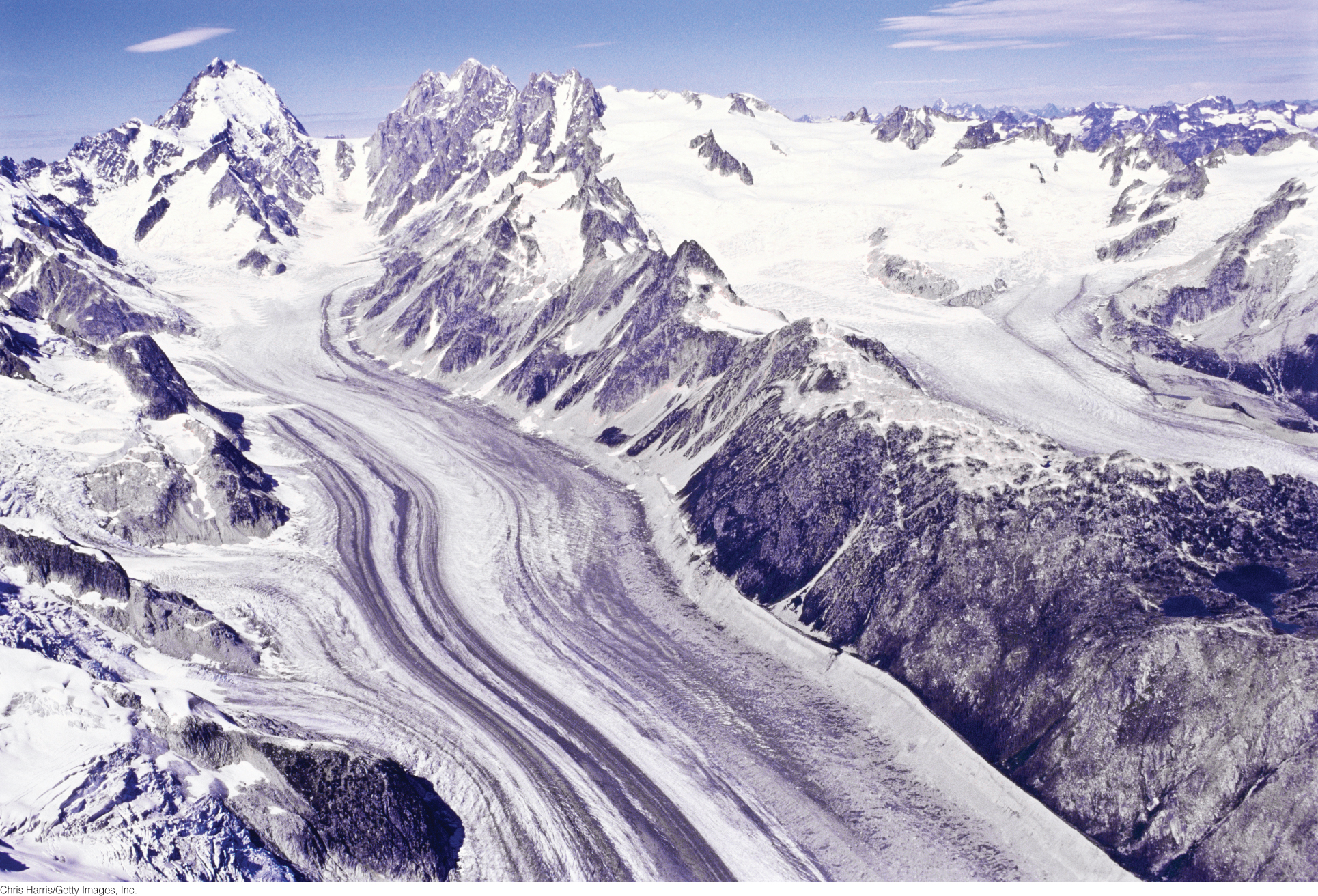586

GLACIERS: THE WORK OF ICE
 Ice as a Rock
Ice as a Rock How Glaciers Form
How Glaciers Form How Glaciers Move
How Glaciers Move Glacial Landscapes
Glacial Landscapes Glacial Cycles and Climate Change
Glacial Cycles and Climate Change
587
THE VIEW OF EARTH from space is painted with the colors of water: vast blue oceans, swirling white clouds, and the frozen whites of solid ice and snow. The Earth system is constantly moving water across the planetary surface in ever-changing patterns. Among the main reservoirs of water, it is the system’s icy component—the cryosphere—that waxes and wanes most visibly during climate cycles.
The ice sheets of Greenland and Antarctica, as huge as they are, now blanket only about one-tenth of Earth’s land surface. But as recently as 20,000 years ago, continental glaciers covered almost three times more land than they do today, extending across all of Canada and deep into the midwestern United States. Within the next century or so, global warming could melt large parts of the existing ice sheets, with worldwide effects on human society. Sea level would rise, submerging low-lying cities. Climate zones would migrate, changing wet zones into deserts and vice versa. Given these threats, there is no doubt that understanding Earth’s cryosphere—always an interesting scientific subject—has become an extremely practical goal.
The landscapes of many continents have been sculpted by glaciers now melted away. In mountainous regions, glaciers have eroded steep-walled valleys, scraped their bedrock surfaces smooth, and plucked huge blocks from their rocky floors. During the ice ages of the Pleistocene epoch, glaciers pushed across entire continents, carving far more topography than water and wind. Glacial erosion creates enormous amounts of debris, and glaciers transport huge tonnages of sediment, depositing it at their edges, where it may be carried away by meltwater streams. Glacial processes affect the discharges and sediment loads of river systems, the erosion and sedimentation of coastal areas, and the quantity of sediment delivered to the oceans.
588
In this chapter, we take a close look at Earth’s glaciers, how they form and change over time, and how they leave their marks on Earth’s surface by eroding and depositing material as they advance and retreat. We examine the role glaciers play in the climate system and discover what the geologic record of glaciation can tell us about climate change over time.